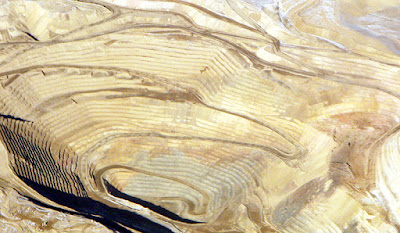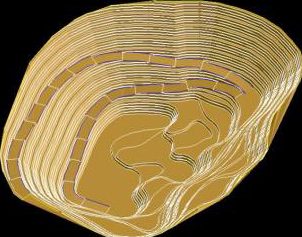Gold is regarded as one of the most precious metals in the world, which accounts for its increasing demand as well as rising prices. Gold mining industry the past year has changed in global gold production rankings, both by country and by company.
Gold is mined in around 90 countries worldwide. Some of the countries that historically have been top producers continue to be so, including Australia, Canada, the USA and South Africa. But China is now the world’s top producer, having increased productivity significantly since 2005.
It is interesting to see how the major gold mines in world are faring in the grand scheme of things – both nationally and by company, given the continuing lowish gold prices pertaining over the past two to three years. While one may sometimes argue with the methodology, and how to find gold mines
Here are the world’s top gold-producing countries from 2014, as reported by the USGS
1. CHINA
China’s gold
output continues to grow, and the country kept the top spot for the eighth year
in a row, Reuters reported. Last year, China’s production grew over 5 percent,
hitting about 450 metric tons. As well as being the world’s largest producer of
gold, China represents one of the most significant markets for gold
consumption. In 2011, China was second only to India in this regard with demand
for 779.8 tonnes of gold, a 22% increase on the previous year and with
consumption reaching approximately 886 metric tons in 2014. Though that’s a
considerable number, it’s actually down 24.7 percent from 2013. ”Although 2014
gold consumption fell by a large margin, the (longer-term) trend of increasing
demand has not changed,” the China Gold Association noted. China is also a
significant holder of gold reserves, currently behind only USA, Germany, the
IMF, Italy and France.
2. AUSTRALIA

Australia’s growth in gold production for 2014 put the country in the number-two spot for the year, reaching approximately 270 metric tons. That represents an increase from the 2013 level and is the highest production rate by the country since 2003. While growth was strong all year, production reached a high of 73 metric tons for the fourth quarter.
Australia continues to be at the forefront of world gold production. From being the fourth largest producer of gold in 2008, Australia’s production has surged to secure the country’s position as the world’s second largest producer of gold in both 2009 and 2010.
Australia has consistently been one of the world’s largest producers of gold since its first gold rush, centred on Victoria in 1851. During the 1850’s, Australia was producing some 40% of the world’s gold. The immigration sparked by the rush, fuelled further agricultural and industrial development and saw nearly 500,000 people attracted to the state of Victoria.
3. RUSSIA

Russia saw a significant rise in gold production in 2014, leading the country to surpass the US for the first time in 25 years, RT reported. According to a report from Russia Beyond the Headlines, the country’s production increased 27 percent in the first half of 2014 alone.
Sergey Donskoy, minister of Russian Natural Resources and Environment, said 270 mineral deposits were discovered in Russia over the past five years, even though the country is not considered a leader in mineral exploration investment. “This, in our opinion, has negative consequences, including a negative impact on the social and economic development of the regions,” Donskoy said.
Russia produced 209 tonnes of gold in 2011, a 3.6% increase on the previous year. Of this, 89% (185.3 tonnes) was mined, the rest from recycled sources or by-products of other mining.
Two thirds of Russian gold production is estimated to come from six eastern ‘federal subjects’ in the country: Amur, Irkutsk, Khabarovsk, Krasnoyarsk, Magadan, and Sakha-Yakutia.
Russia is both the fourth largest producer of gold and the fourth largest market for gold jewellery. In 2011 the Russian jewellery market absorbed 75.1 tonnes of gold.
The largest gold producer in Russia is Polyus, who operate the Olympiada mine, currently the single biggest producer of Russian gold. In 2011 it produced 720 Koz. World Gold Council member Kinross operate the Kupol mine, the second biggest producer, which in 2011 produced 486 Koz
4. UNITED STATES
While gold production dropped about 8 percent from 2013, the US still made the latest list of top 10 gold-producing countries, putting out about 211 metric tons of the yellow metal last year. The country has about 45 lode mines, a few large placer mines in Alaska and numerous small mines in Alaska and other western states. Of these operations, 30 produced more than 99 percent of the total amount mined. Interestingly, Mining Global reported that there’s a trend of gold mining companies earning more money from US -based mines than from operations anywhere else in the world. Historically, three quarters of United States gold has come from just five states: Nevada, Alaska, California, Colorado and South Dakota. Today, despite being known as the ‘Silver State’, Nevada is responsible for some 74% of the United States’ total production of gold, contributing more than 10% of State GDP














